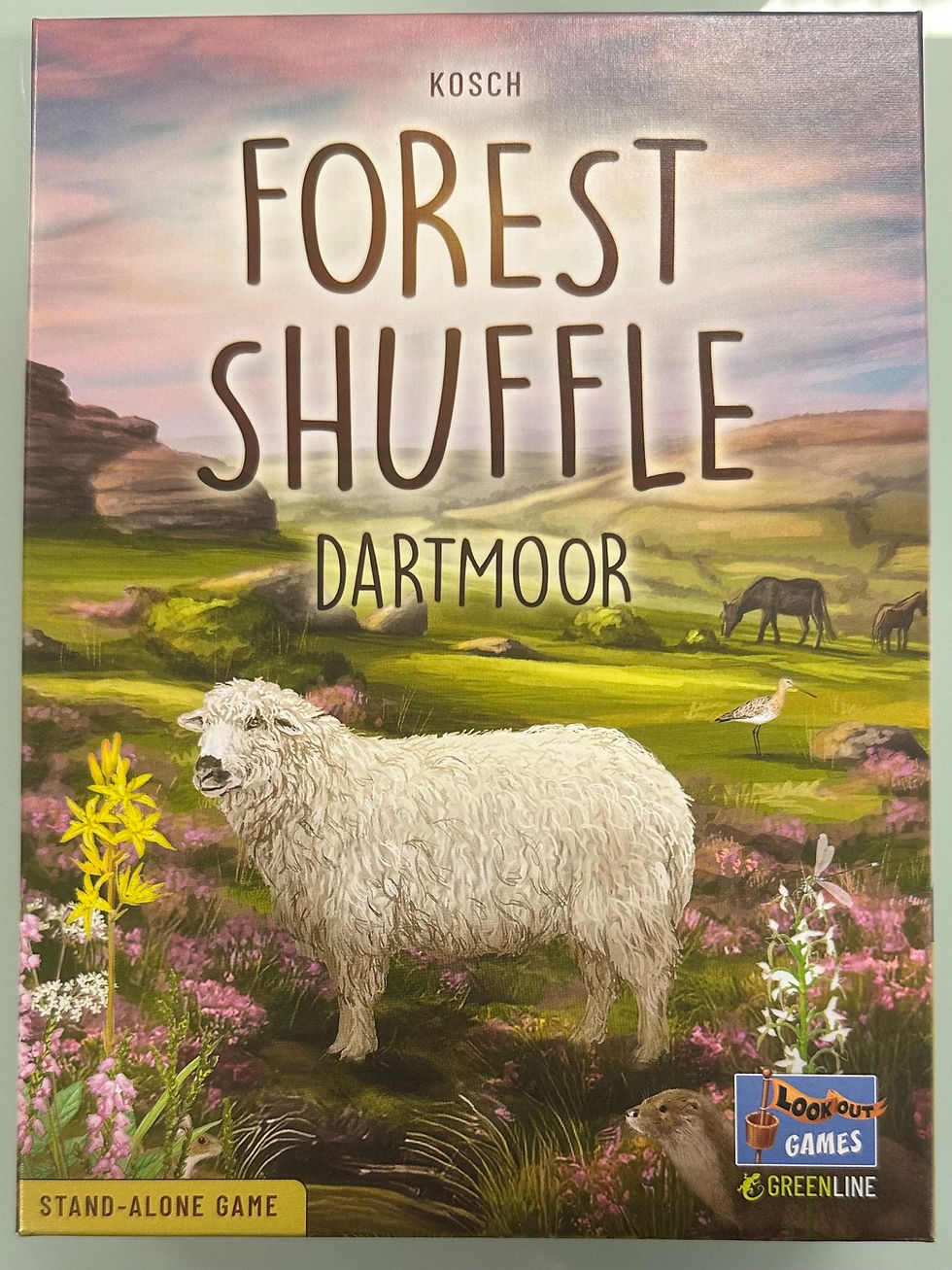Ni no Kuni II
- David Fox

- Oct 13, 2022
- 3 min read
Updated: Apr 12, 2023
Intellectual Property (IP) board games have had a long overdue rise in quality of late: no longer are titles like Battlestar Galactica (FFG) and Lords of Waterdeep (Wizards of the Coast) outliers in the hobby. The advantage of an IP game being mechanically sound is that it can not only transcend its original incarnation but actually make people interested in it; in this case, a video game. I don’t really play video games and had never heard of Ni no Kuni II (or I for that matter), so this was very much a step into the unknown for me.

Ni no Kuni II is a cooperative game for up to 4 players, designed by Bryce Johnston and Steve Margetson, and published by Steamforged Games. As a fully cooperative game, it's also playable solitaire. It takes a little over 30 minutes to play and although the recommended age is 14+, my younger son had no difficulties with it rules- or tactics-wise, tho' it took both of us a play to realise our initial strategic shortcomings. The Victory Point target is dependent on player count, monsters left unslain and the chosen Big Bad (there are two: Doloran or The Horned One), with points coming from buildings constructed in the absurdly named kingdom of Ding Dong Dell.
Players assume the roles of up to four characters - Evan Tildrum, Roland Crane, Tani or Bracken Meadows - each of which have different values across Melee, Ranged and Magic statistics, as well as a special ability. Likely these are good representations of the original digital characters. The statistics show how many dice are rolled when trying to defeat a corresponding Monster. They also take one Higgledy companion each, which is effectively a +1 to any stat.
The kingdom board consists of four, six or eight locations - for one, two and three/four players respectively - at which a Quest reward and Monster will be randomly paired. Each combo has 1 to 3 slots that must be filled with either characters or Higgledies, a target value, often a special condition, and a reward for success. Rewards come in the form of Experience, Kingsguilders and Supplies, which are the currencies used to buy the buildings at the end of each of the five rounds. Some Quests and Monsters also yield Soreaway Sweets and Angel’s Tears which are used for mitigation.
A round begins with players discussing where to allocate their Characters and Higgledies, deciding whether to guarantee a few locations or to spread resources more thinly and increase the risk/reward of failing or completing Quests. These are resolved in the order of the players’ choosing, after which the rewards are used to construct buildings which themselves may generate future resources or grant special powers. Not forgetting, of course, to keep working toward that Victory Point target. Do this five times, and the game is won or lost.
Ni no Kuni II has a simple structure which serves it well. Except for buying buildings, there is little to do beyond combat… which is - my son found out courtesy of an 85%-off Steam sale - what you spend most of your time doing in the video game. The twin decision points of picking which foes to combat and which buildings to construct are where most of the time will be spent, along with rolling those fistfuls of dice. It may not sound much, but it fills the snappy play time with a good amount of satisfying decisions.
With its Japanese Role-Paying Game (JRPG) origins, it is no surprise that the art by Hiroyuki Maeda, Hiroshi Matsuyama, Yoshiyuki Momose and Nobuyuki Yanai is very nicely done, as is the graphic design, which was complemented by a rule book that left us in little doubt as to how to proceed, with one exception...
Difficulty is not high, but I have played a lot of cooperative games and my son, despite his youth, has a lot of experience. Our first game was a squeaky win, our second vastly more comfortable since we knew which buildings would be most beneficial at different stages of the game. In fact, it was so comfortable that we found (or, more accurately, did not find) an omission in the rule book as to what to do if a resource’s supply is exhausted. That quick turnaround in competence might suggest replayability is low for more experienced gamers, but as this is a more family-oriented game, this doesn’t feel like a huge knock.
Ni no Kuni II is a solidly designed coop that either introduces or consolidates its IP into an engaging real world format. It is unlikely to be a game night centrepiece or a filler for grizzled gamers, but as a family pastime or in a gateway setting, it fits very well. And who doesn’t like saying the word ‘Higgledies’?
(Review by David Fox)




